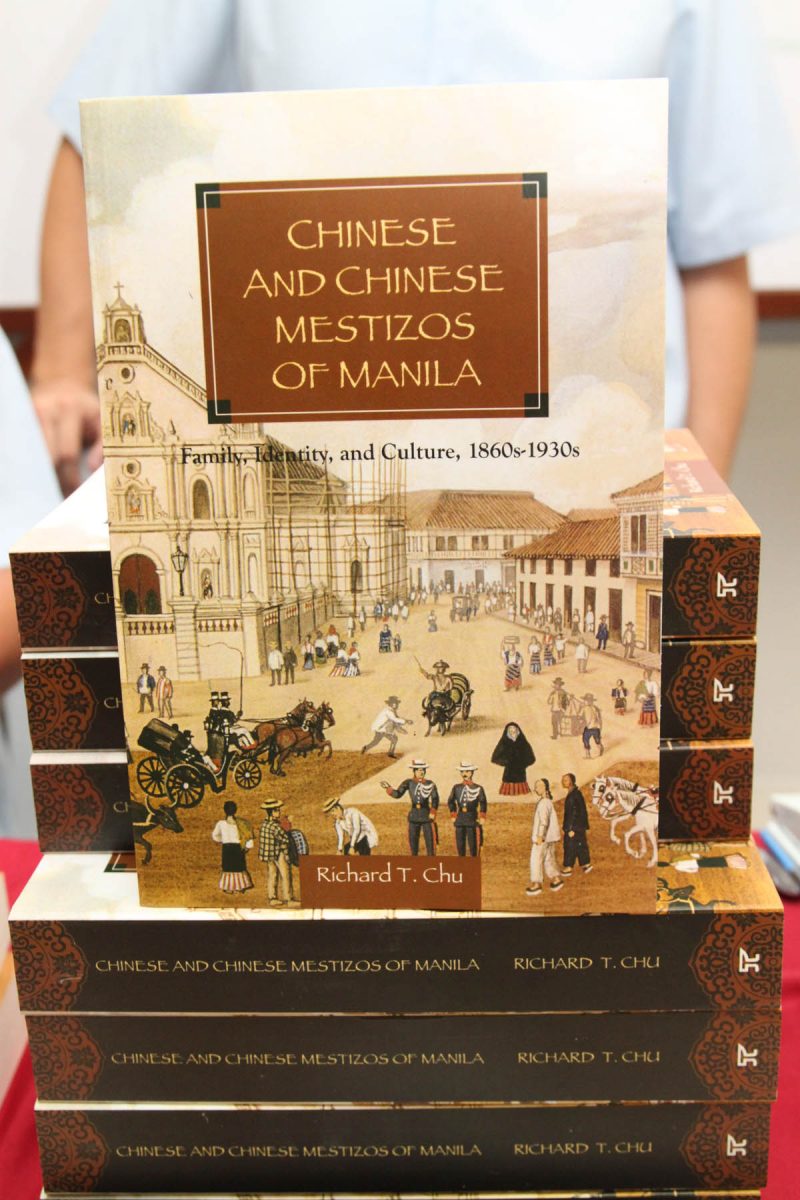First published in Tulay Fortnightly, Chinese-Filipino Digest 25, no. 4 (July 24-August 13, 2012): 10.
It has been said that knowing the past may give one a vision of the future. Perhaps this explains the buzz over the recent launch of the paperback version of Chinese and Chinese Mestizos of Manila, Family, Identity and Culture, 1860s-1930s.
Originally published in hardbound version by Brill Publishers of The Netherlands in 2010, the paperback edition by Anvil Publishing Inc. is now available in bookstores in the Philippines.
Written by Tsinoy historian Richard Chu, it looks at a period and aspect of local society that has been little researched: the times of our Tsinoy forefathers, and the roles they played in their adopted homeland.
“This book is an important study, unprecedented in the study of the Chinese and Chinese mestizos of Manila on several counts,” says Dr. Bernardita Reyes Churchill, president of the Philippine National Historical Society and former chairman of the history department at the University of the Philippines, Diliman, Quezon City.
One of them, she notes, is of being written by someone who belongs to the community being studied, thus providing first-hand, illuminating insight for readers.
“Chu’s book is valuable for showing how malleable culture is, all the way up to identity,” says Dr. Michael Tan, dean of U.P.’s College of Social Science and Philosophy.
“Anvil’s reprint is a welcome one not just for local ethnic Chinese but for anyone interested in the way we form our ethnic identities,” says Tan.
Chinese Mestizos, like another book Chu previously wrote, focuses “on how a few prominent Chinese families tackled ethnicity. Terms like ‘diasporic strategies’ and ‘liminal virtuosity’ are used in the book to show the complicated, and cunning, ways that people employ to deal with ethnicity.”
The book explores the lives of migrant Chinese and their mestizo progeny, and also explores the phenomenon of Chinese and mestizos who at different points in time, and under different circumstances, identify themselves variably as Chinese, mestizo, Filipino, or even naturalized Spanish.


“Much of what Chu describes actually resonate today with Filipinos, in our contemporary diaspora. Many Filipinos have found ways to get around immigration rules in the United States and other countries, sometimes with faked documents,” Tan says.
Tan points out parallels with early Chinese migrants, who found similar ways to get past prejudicial immigration barriers put up by American administrators.
“As a Filipino with some Chinese heritage… the book informed me more of the history and culture of the Chinese and Chinese mestizos in the Philippines beyond what I thought I already knew,” says Churchill in The Journal of History, vol. LVII (January-December, 2011).
For her part, Dr. Caroline S. Hau, U.P. associate professor in cultural studies, notes in her review of Chinese Mestizos that “Works of scholarship are artifacts of their times.”
Indeed, this particular artifact offers a more informed look at prominent Tsinoys in the recent past who helped shaped society and the nation, and yet whose names are fading from the consciousness of the present generation of Tsinoys.
The book also looks at factors that promoted anti-Chinese sentiments, as well as instances of popular Filipino goodwill and support for the Chinese.
Hau notes that “Chu concentrates on the personal histories of a number of prominent Manila-based first-generation Chinese mestizos, men like Mariano Limjap and Ildefonso Tambunting, to show how ‘ethnic categories are better understood as flowing along a shifting and problematic continuum’.
“Like their Chinese merchant fathers (Chu here discusses Joaquin Limjap, Ignacio Sy Jao Boncan, and Carlos Palanca Tan Quien-sen), these mestizos could speak or understand not only Spanish and the local languages but Hokkien as well; built extensive social and commercial networks with Chinese, natives, and foreigners; traveled constantly and widely; acquired their know-how in business as much from their China-born fathers as from their locally-born mothers (whether mestiza or india); and educated their children in China, Hong Kong, Spain and later America.
“Although Mariano Limjap identified himself as a ‘Spanish mestizo’, he represented his Chinese father (a Spanish subject) in business deals and traveled to China and Hong Kong, maintained links with relatives in China, served as a member of the Malolos Congress under the Philippine revolutionary government, and entertained high officials from both China and America. Bonifacio Limtuaco, who spent his childhood in China, requested a change of legal status from mestizo to sangley, appearing in public dressed in Chinese clothes. An excellent discussion of Cu Un-jieng and his many children by his Chinese and Chinese-mestiza wives brings the discussion from past into present by presenting the full range and hybrid ramification of their citizenship, familial, educational, and cultural practices.”
By telling their stories, Chu tells Tulay, he hopes to create greater understanding between Chinese living in the Philippines, and their Filipino compatriots. To this end, he may well have succeeded.
Churchill says: “The wealth of information provided in the book has helped me understand and contextualize some of the biases, prejudices and false impressions held through the years of growing up, going to school, socializing with family, classmates, friends, neighbors, vendors, artists and artisans, professionals, storekeepers and vendors, and students – all classes of Chinese and Chinese mestizos – who are part and parcel of the history of this nation.”
